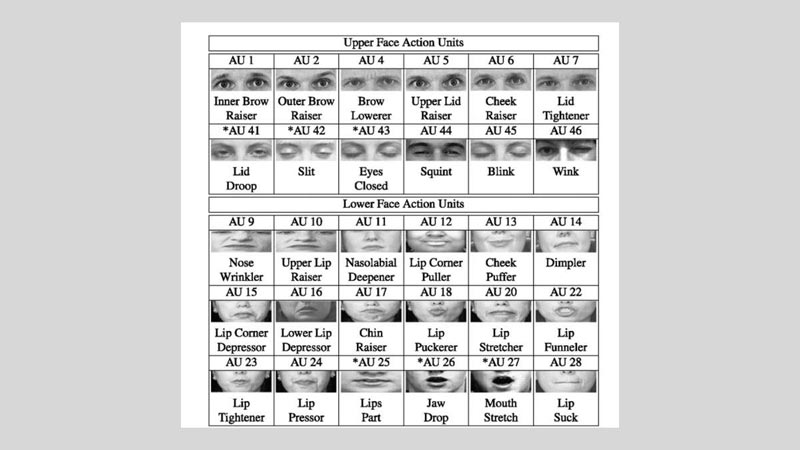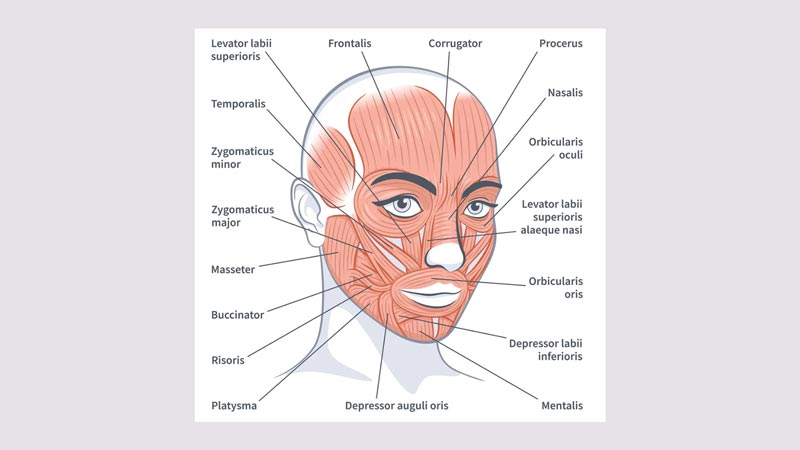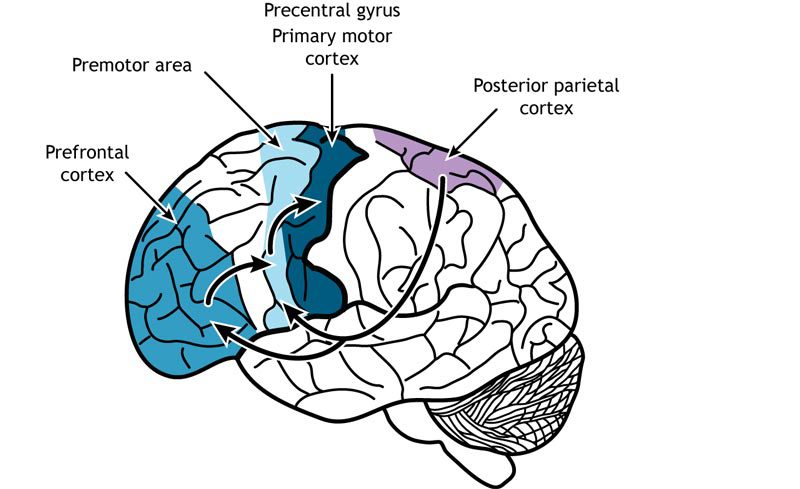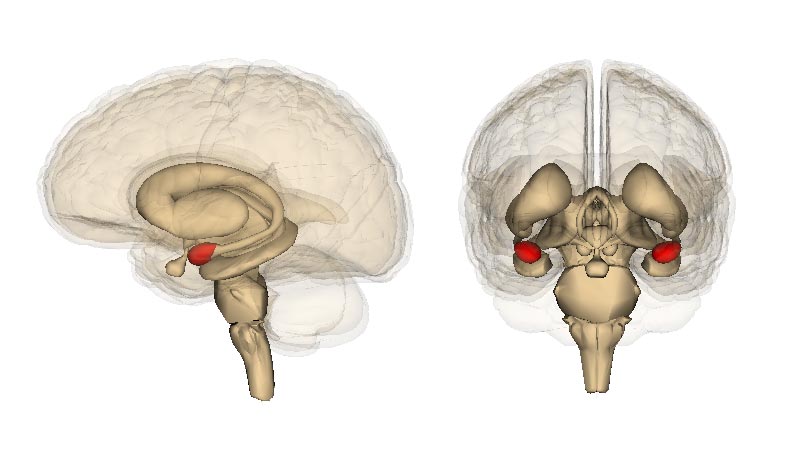The ‘Science of Smiles’ is more than a flash of teeth and a crinkle of eyes. It’s a universal language we all converse in, often without realising. Last week, we travelled through A Day in the Life of a Face, witnessing the array of emotions it mirrors from dawn to dusk.
Today, we’re stepping into a new chapter, peeling back the curtain to reveal the sophisticated workings that make each smirk, scowl, and surprise possible. How does our brain join in this silent conversation, and what keeps these expressions in harmony?
From the prefrontal cortex’s composed guidance to the amygdala’s fiery instincts, let’s voyage through the neural pathways and neurons that give life to our facial expressions.

The Man That Helped Us Understand The Science of Smiles
Last week, in the blog post A Day in the Life of a Face, we explored the seven universal emotions: Happiness, Surprise, Anger, Disgust, Fear, Contempt, and Sadness. However, do you know who helped us with this insight?
Dr Paul Ekman, an American psychologist and professor at the University of California, San Francisco, is a seminal figure in emotions and their connection to facial expressions. Often referred to as the ‘godfather of emotions’, he has dedicated his career to pioneering this study area.
Over eight years, Ekman meticulously developed a technique to quantify and measure all human face possible movements. This groundbreaking work led to the creation of the Facial Action Coding System (FACS), which was published in 1978.
In Ekman’s words, the development of FACS was a demanding process. Still, it ultimately opened Pandora’s box into the world of the science of smiles. Today, FACS is a fundamental tool used for teaching facial expressions. It is also employed by animation studios worldwide when animating characters’ expressions. As Ekman himself reflected:
I would never have really discovered micro-expressions, if I didn’t have these tools [the technique for quantifying and measuring all movements the face can make] that allowed me to look so precisely at everything the face did.

The Science of Smiles, The Anatomy of Facial Expressions
The only way to help me explain this is through music and an orchestra. The science of smiles is a lot more complex than producing it. With my dwindling dream of mastering an instrument, I can still utilise this musical analogy to help explain the complexities of your smile.
Imagine this; you’re walking down the street and seeing a friend from far away. You instantly light up with a big radiant smile crossing your face. Have you ever wondered what’s happening beneath the skin when you produce this heartwarming expression? Let’s see what is at play!
Meet the Maestro of Your Smile: The Zygomaticus Major
In the grand orchestra of your face, consider the Zygomaticus Major as the conductor. This superstar muscle, the ‘Smiling Muscle’, is the key player in forming your radiant grins and heartfelt smiles. But our maestro works with others. Oh no, it leads a team of up to 43 other facial muscles, all dancing to the tune of one nerve-the facial nerve.
Just like an orchestra has various sections (strings, brass, woodwinds), our facial expressions also have teams and are grouped by different muscles:
- Zygomatic Group
- Temporal Group
- Mandibular Group
- Cervical Group
- Buccal Group
These virtuosos harmonise with the Zygomaticus Major to compose the symphony of our smiles, from a shy, slight curve of the lips to a full-on, beaming, ear-to-ear grin!
The Science of Smiles: Many Faces of Emotion
Our face is not just about smiles. As we discovered last week, it’s our personal billboard, advertising our feelings to the world. From the surprised raising of our eyebrows (thanks to the Frontalis muscle) to that universal sign of disagreement—a frown, achieved by the Procerus and Corrugator Supercilii muscles.
When we encounter an adorable child or puppy, and our eyes squint in joy, that’s the Orbicularis Oculi at work.
Your Smile’s Supporting Cast
To help break it down further, here are some of the key players in our facial expressions and the science of smiles:
- Zygomatic Muscles (Major and Minor): Pull the corners of the mouth up and outward when we smile.
- Risorius: Known as the ‘Dimple Maker’, this muscle pulls the mouth corners laterally (outward). Not always active in all people but certainly plays a role in those adorable dimpled smiles.
- Orbicularis Oris: This is the muscle that controls your lips.
- Depressor Anguli Oris: Ever had a bad day? This muscle pulls the mouth corners downward, illustrating our frowns.
And there’s more! Our face is a complex web of muscles, each with a role in our expressions, from the ‘I just bit into a lemon’ face to the ‘I just got the job!’ ecstatic grin.
The Facial Symphony
Underneath our skin, these muscles constantly contract and relax harmoniously, directed by the facial nerve (CN VII), our body’s master conductor. They are nourished by the facial artery, making sure the performance never misses a beat.
These muscles, also known as craniofacial muscles, are generally grouped around our facial openings or stretch across our skull and neck. They are categorised into:
- Muscles of the Mouth (Buccolabial Group)
- Muscles of the Nose (Nasal Group)
- Muscles of the Cranium and Neck (Epicranial Group)
- Muscles of the External Ear (Auricular Group)
- Muscles of the Eyelid (Orbital Group)
Next time you hear an orchestra, think of your smile. Also, with this knowledge in hand, the next time you flash a smile, give a little nod to the maestro Zygomaticus Major and the fabulous orchestra of muscles that just played the sweetest symphony, all to help you produce a simple.

The Brain and Facial Expressions
Ever wondered how the brain gets involved when we travel through our emotions are the different emotional expressions we make? Let’s tap into the science of smiles directly from the control room – our brain!
The Prefrontal Cortex: The Decision Maker of Your Smile
The prefrontal cortex is like the CEO (aka the boss) of your facial expressions. It’s in charge of your social behaviour. So when you greet someone with a grin, the boss calls the shots.
It plays a crucial role in when and why we smile. Ever caught yourself with a spontaneous smile at a joke? That is right, thank the prefrontal cortex!

The Amygdala: The Emotional Heart of Your Smile
The amygdala is your emotional control centre. When you see a friend across the street, the amygdala sparks that warm, fuzzy feeling.
This tiny almond-shaped part of the brain is why your smile can be a window to your soul for the world to see. In the science of smiles, the amygdala tugs at your heartstrings.
The Motor Cortex: The Conductor of Your Facial Orchestra
This part of your brain is like the conductor of a grand facial symphony (sorry, I had to return to this analogy again, music is understood by all). When the motor cortex gets the signal, it cues your zygomaticus major, the star of your smile (the conductor, see above), to pull those mouth corners upwards.
Picture it as the maestro, directing the harmonious movement of your muscles to craft that perfect smile.

Mirror Neurons: The Empathy Players in the Science of Smiles
Mirror neurons are fascinating little cells. When you see someone else smile, these neurons fire up as if you were smiling. It’s like they’re saying, “We feel you!”
They help us understand and mimic the emotions of others (The Johari Window). Ever found yourself smiling back at someone, almost like an involuntary reflex? That’s your mirror neurons working their empathetic magic.
A whole team in your brain plays a vital role in the beautiful science of smiles. It’s a complex, heartwarming symphony conducted by your grey matter (the boss). Who knew the science of smiles could be so… enlightening?
The Psychology of Facial Expressions
The science of smiles is more than flexing muscles; it’s a window into our emotions and mental state. Here’s how:
When you smile genuinely, psychologists call it a “Duchenne smile.” It signals true happiness and warmth. It’s authentic joy, not just a polite gesture.
Ever noticed a tight-lipped smile? Psychologically, it might indicate that someone is holding back or concealing their emotions.
Furrowed brows and a lowered mouth often aren’t just random. They’re universally linked to feelings of sadness or concern.
Surprise is one of the few universal expressions illustrated by raised eyebrows and wide eyes. It’s instinctual and crosses cultural lines.
Your scowl? It’s not just your face reacting. It’s a psychological response, an expression of dissatisfaction or disagreement.
So, the psychology of facial expressions plays a crucial part in the science of smiles. It’s a rich, emotional language we all speak, regardless of background.
Final Remarks on The Science of Smiles
In this post, I tried to explore the intricate choreography that our brains and muscles perform in the ‘Science of Smiles’. We’ve seen the meticulous workings, from the decisive prefrontal cortex to the emotional amygdala, that combine to create the expressions we wear daily.
We went beyond the skin, peering into the anatomy and psychology that shape our most human form of communication. Whether a heartfelt grin or a fleeting frown, our faces tell tales that words often can’t.
In concluding this post, I hope you are left with a newfound appreciation for our faces’ silent yet profound language. It’s a reminder that our expressions are more than mere movements; they are the narrators of our emotional stories, interwoven with complex biology and psychology.
Please join me next week as I negotiate different continents and cultures, exploring how these universal expressions are uniquely triggered worldwide. Until then, may your smiles be radiant and your scowls be few.
A Journey Through Expressions
This article is part 2 of our 5-part series delving into the world of facial expressions.
Past:
A Day in the Life of a Face – I explored the myriad of emotions our faces display daily, from dawn’s first light to night’s quietude.
Current:
The Science of Smiles, Scowls, and Surprises – Today, I’ve dived deep into the fascinating science behind why our faces move the way they do, from the neural pathways lighting up our smiles to the muscles crafting our scowls.
Up Next:
Expressions Around the World – Prepare to embark on a global adventure, discovering how different cultures have unique triggers for these universal facial expressions.
Coming Soon:
- Baby’s First Expressions – A humorous look at how babies masterfully cycle through all seven expressions in mere minutes.
- Facial Expressions Challenge – Take on a fun and insightful challenge, consciously adopting each of the seven facial expressions daily.
Stay tuned as we continue this exciting exploration into facial expressions!
Sources
- Adolphs, R. (2002). Recognising Emotion From Facial Expressions: Psychological and Neurological Mechanisms. Behavioral and Cognitive Neuroscience Reviews, 1(1), 21-62. [Accessed 12 August 2023]
- Beh Mei Yin, Delina & Omar, Shariman & A. Talip, Bazilah & Mukhlas, Amalia & Norain, Nur & Othman, Abu Talib. (2017). Fusion of face recognition and facial expression detection for authentication: a proposed model. 1-8. 10.1145/3022227.3022247. [Accessed 14 August 2023]
- Dimberg, U., & Thunberg, M. (2012). Empathy, Emotional Contagion, and Rapid Facial Reactions to Angry and Happy Facial Expressions. Psych Journal, 1(2), 118-127.
- Ekman, P., & Friesen, W. V. (1969). The Repertoire of Nonverbal Behavior: Categories, Origins, Usage, and Coding. Semiotica, 1, 49-98. [Accessed 14 August 2023]
- Iacoboni, M., & Dapretto, M. (2006). The Mirror Neuron System and the Consequences of its Dysfunction. Nature Reviews Neuroscience, 7(12), 942-951. [Accessed 14 August 2023]
- Rinn, W. E. (1984). The Neuropsychology of Facial Expression: A Review of the Neurological and Psychological Mechanisms for Producing Facial Expressions. Psychological Bulletin, 95(1), 52-77. [Accessed 14 August 2023]


